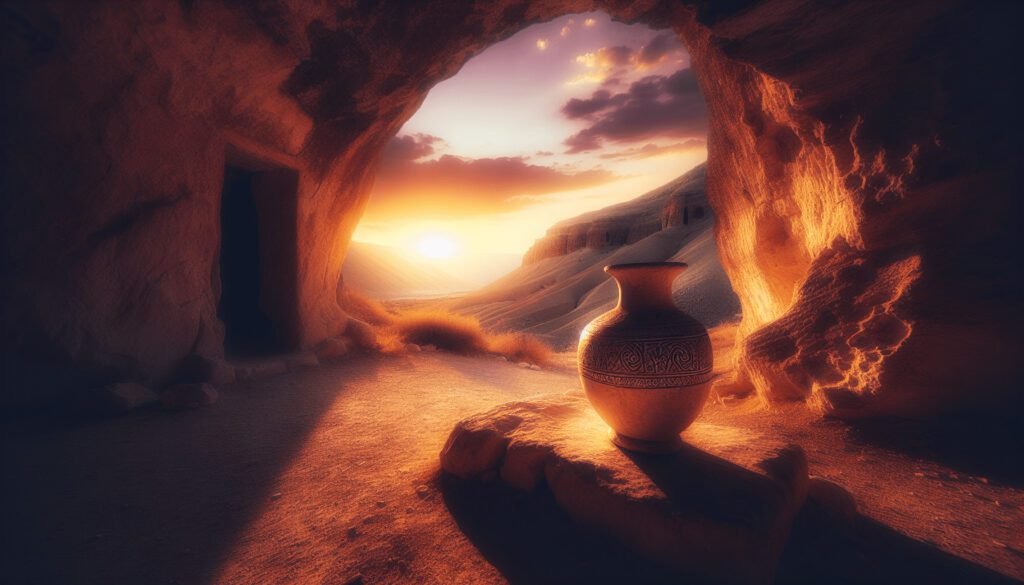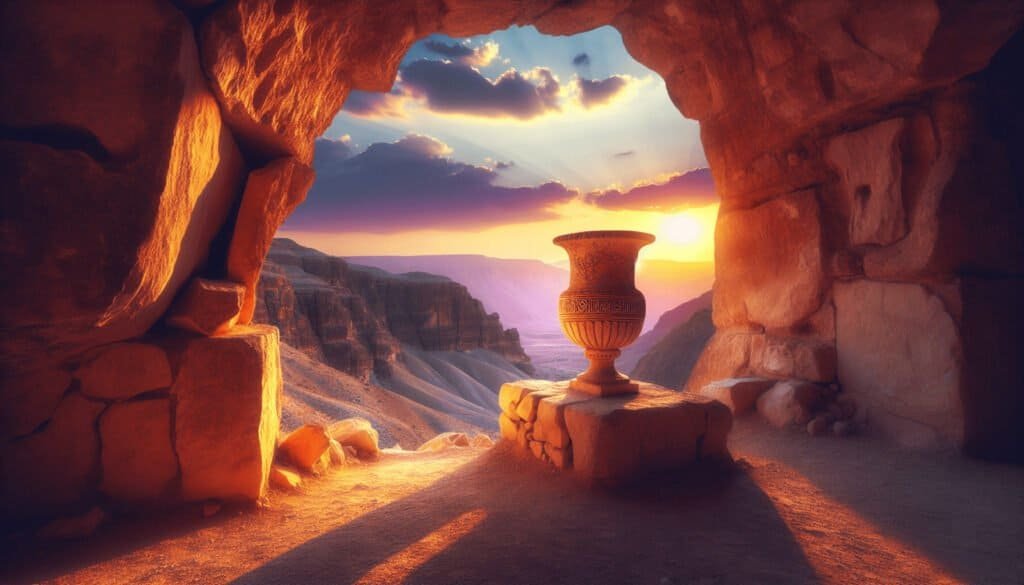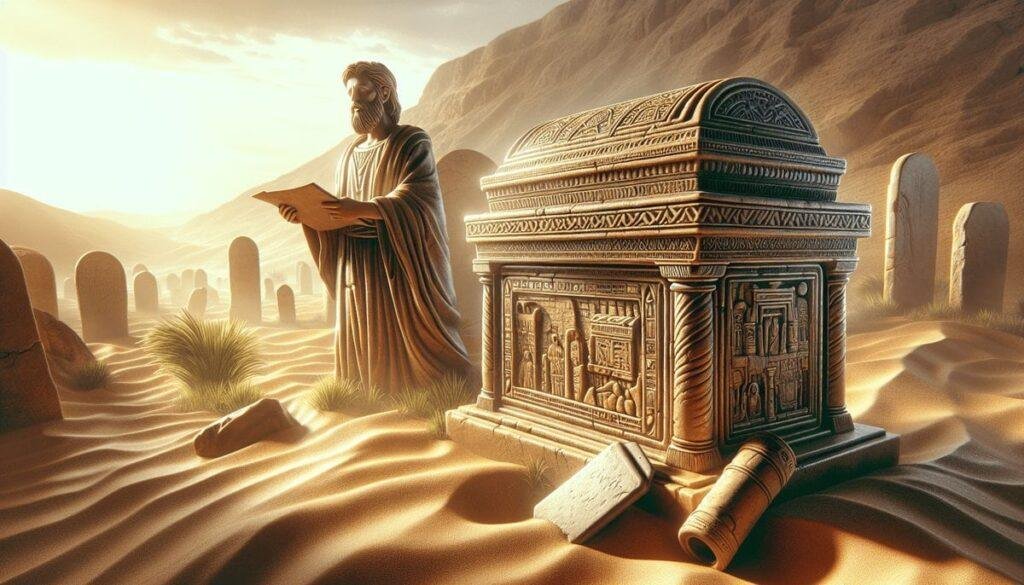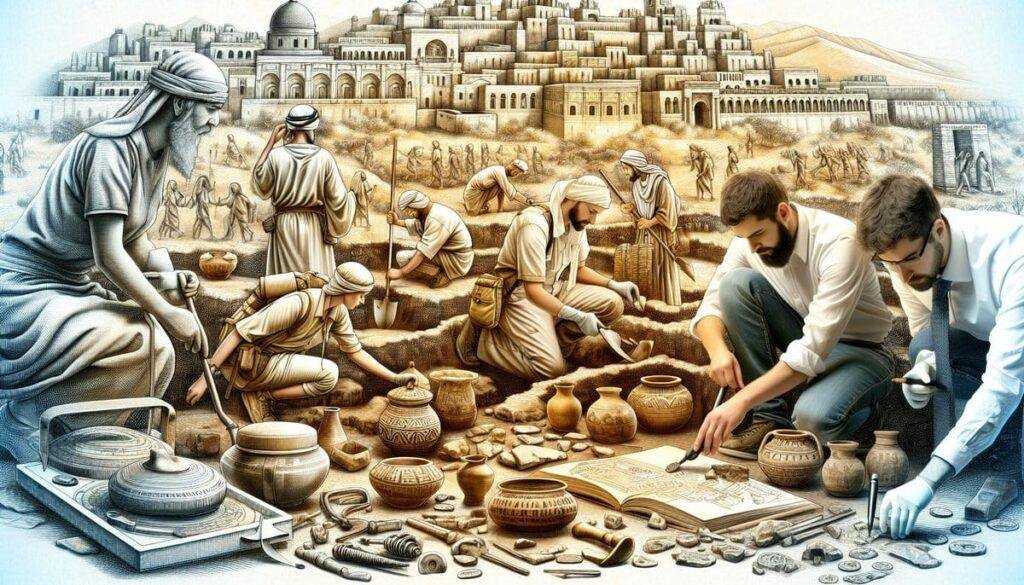What if the whispers of the past could shape your understanding of the present? Imagine standing at the edge of a cave where history, faith, and mystery converge, waiting for you to unravel its secrets. The Qumran Sunset Cave, often overshadowed by its more famous counterparts, offers a glimpse into a world steeped in religious fervor and profound truths. There’s much to unpack here, and you’re in for a journey that transcends the ordinary.

The Enigmatic Qumran: A Brief Historical Context
To understand the significance of the Qumran Sunset Cave, it’s essential to first grasp the historical backdrop of Qumran itself. Nestled near the Dead Sea, Qumran wasn’t just a fleeting settlement; it was home to a sect known as the Essenes during the Second Temple period. This group was deeply committed to religious purity and lived in a community dedicated to the strict observance of Jewish law.
The Essenes were not just any sect. They were seekers of truth, often depicted in the annals of biblical history as ascetics who believed that their way of life set them apart from the corrupt practices they saw in Jerusalem. As you think about their existence, consider what it meant to live in such radical separation from the world around you.
The Dead Sea Scrolls: Echoes of the Past
The discovery of the Dead Sea Scrolls in 1947 gave scholars a treasure trove of texts that revealed the beliefs and practices of the Essenes in rich detail. These ancient documents not only include biblical manuscripts but also community rules, commentaries, and apocalyptic writings, providing invaluable insights into a turbulent period in Jewish history.
- Biblical Texts: Among the scrolls are some of the oldest known manuscripts of the Hebrew Bible.
- Sectarian Writings: These texts offer a glimpse into the rules and regulations governing the Essene community.
- Apocalyptic Visions: The scrolls also reflect the sect’s theological perspectives on end times and divine judgment.
When you ponder these writings, it’s easy to see why scholars and religious leaders alike frame them as crucial artifacts of faith and history.
Sunset Cave: A Hidden Gem
So, what about the Qumran Sunset Cave itself? As you visualize it, picture a rugged entrance that leads into the sandy, foreboding recesses of a rock face, bathed in the golden hues of the setting sun. Unlike the other caves around Qumran, this particular one holds unique archaeological significance in relation to the Essenes and the Purity Temple.
Archaeological Findings
Recent excavations have unveiled artifacts and inscriptions that signify the cave’s role as a sacred site. Among the findings, researchers discovered:
- Ceremonial vessels: Pottery and tools used in ritualistic practices, suggesting that this cave was not just a hideout but a place of worship.
- Carbon dating evidence: This has helped to refine the timeline of human activity in the cave, linking it closely to the time spent by the Essenes.
As you reflect on these discoveries, consider how they weave a tapestry of faith, necessity, and resilience against the backdrop of a challenging environment.
The Concept of the Purity Temple
Religious purity was of utmost importance to the Essenes. They took various steps to ensure that their community remained untainted. So, what does the term “Purity Temple” signify in this context? It refers not only to the physical aspects of desecration but also to the spiritual state of the community.
- Ritual Cleanliness: The Essenes practiced various rites of purification, including immersion in water, which is frequently mentioned in their writings.
- Dietary Laws: They observed strict dietary regulations, believing that what one consumes directly affects one’s spiritual state.
- Separation from impurities: The community maintained a lifestyle that distanced them from what they perceived as contaminating influences, typically associated with the mainstream Jewish practices of their day.
When you think about this, it’s incredible how their commitment to purity permeated every facet of their lives. It makes you wonder about your own practices and how they define your beliefs.
The Symbolism of the Cave
Every nook and cranny of the Sunset Cave seems resplendent with symbolic meaning. Let’s break this down a bit more.
Sheltering and Security
The cave served as a physical sanctuary. Inferring from the architectural design of similar caves, it likely provided:
- Protection from the elements: The caves shielded the Essenes from the harsh environment above.
- Hiding place for sacred texts: The scrolls were sometimes hidden in caves to safeguard them from destructive forces, both human and natural.
These elements echo much more than just physical shelter; they symbolize the community’s desire to guard their beliefs and knowledge at all costs. You might find it relatable—how often do we seek our own forms of sanctuary in modern life?
A Space of Reflection and Ritual
Given its religious significance, the Qumran Sunset Cave was likely a place where the Essenes engaged in:
- Meditative practices: Quiet reflection on the scriptures and their community principles.
- Ritualistic observances: Conducting ceremonies that reaffirmed their beliefs, such as purification rites.
In a world buzzing with distractions, imagine how calming it might have been to retreat into a cave where the echoes of prayer and ritual have lingered. What does that evoke for your own spiritual practices?
Theological Reflections: Origins and Influence
Digging a bit deeper, what theological beliefs underpin the existence of a site as significant as the Qumran Sunset Cave? The Essenes had a unique understanding of their place in the world.
Dualism: Light vs. Darkness
One of the Essene beliefs was a stark dualism—good versus evil, light versus darkness. This conceptual framework can be seen in their writings, which often depicted the world in terminal terms.
- Light as purity: Associated with divine wisdom and righteousness.
- Darkness as corruption: Tied to sin and unrighteousness.
Their cave was not just a refuge but also a metaphorical space where the struggle between light and dark was continually at play. How does this resonate with the conflicts you face in your daily life?
Messianic Expectations
The Essenes believed in the imminent arrival of a Messiah, which shaped their worldview and community. They sought to live in a manner befitting this anticipated divine intervention.
- Prophetic writings: The scrolls contain numerous references to prophetic visions, illuminating their expectations.
- Preparation for redemption: Their lifestyle choices reflected a readiness for this transformative event.
Such beliefs underscore how hope and anticipation influenced the Essenes’ way of life. Think about your own expectations—how do they shape your reality?

The Interplay Between Qumran and Jerusalem
Historically speaking, Jerusalem and Qumran were like two sides of the same coin. The disparity in practices and beliefs calls for deeper investigation into how these places interacted, even if only indirectly.
Divergence in Practices
As the heart of Jewish worship during the Second Temple period, Jerusalem was marked by its centralized religious authority, which the Essenes outright rejected. Key differences included:
- Temple rituals: The Essenes believed the temple in Jerusalem had become corrupted, while they adhered strictly to their own practices.
- Community structure: Jerusalem’s religious leadership contrasted sharply with the egalitarian stance held within the Essene community.
As you consider this divergence, ponder how differing beliefs can create tension and separation among communities, even today.
Influence on Early Christianity
As the Essenes held views that would eventually permeate early Christian thought, the historical significance of Qumran and its associated teachings cannot be understated.
- Apocalyptic themes: The emphasis on an impending divine judgment reflected early Christian eschatological beliefs.
- Rituals of purification: Practices that would inspire later Christian traditions of baptism and repentance.
It’s fascinating to recognize how this historical moment resonates through time, echoing in various religious ideologies you may encounter in your own life.
The Cultural Impact of the Qumran Discoveries
Beyond the archaeological significance, the discoveries at Qumran impacted various realms of scholarship, religion, and culture.
Academic Enrichment
Scholars from various disciplines have engaged with the Qumran findings, using them to enrich our understanding of:
- Second Temple Judaism: Shedding light on the varied religious landscape of the time.
- Biblical Exegesis: Offering critical insights into biblical texts that continue to inform theological study today.
While engaging with these academic pursuits, you might think about how your understanding of culture and knowledge expands with every new insight you gain.
The Influence on Contemporary Spirituality
The teachings and rituals of the Essenes have reverberated through the centuries, finding resonance in various spiritual and religious movements. Many contemporary practices emphasize:
- Mindfulness and meditation: Drawing inspiration from the Essene retreat into nature and solitude for reflection.
- Purity of life: Addressing issues of moral and ethical behavior in a swiftly changing world.
When you see these parallels, it’s heartening to note that ancient wisdom can still guide modern spiritual paths.
Conclusion: Tying Ancient Truths to Modern Perspectives
As you step away from the enchanting world of the Qumran Sunset Cave, consider the multitude of truths it unveils. This site encapsulates a core aspect of humanity—the desire to seek purity, understanding, and connection to something greater than oneself.
- Reflections on purification: The Essenes remind you of the importance of maintaining your values and moral integrity amidst chaos.
- Understanding of community: Their pursuit of truth in isolation illustrates a profound paradox: sometimes, separation can foster a deeper connection to one’s beliefs.
Ultimately, the Qumran Sunset Cave serves not just as a relic of the past but as a guiding light for your present. You might carry the essence of the Essenes with you in your daily life, striving for purity and understanding as you navigate your spiritual journey. The search for truth, after all, is a timeless endeavor—one that transcends the boundaries of time, space, and belief.


